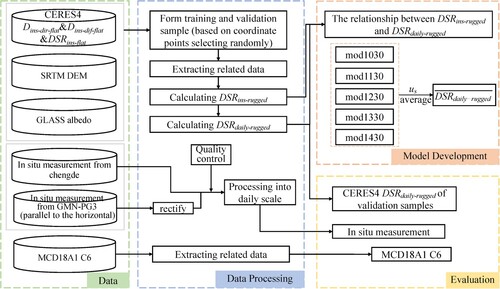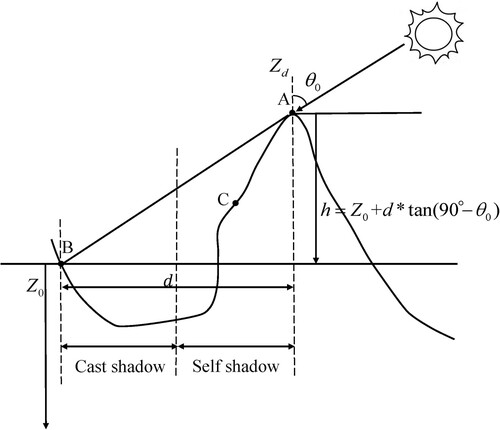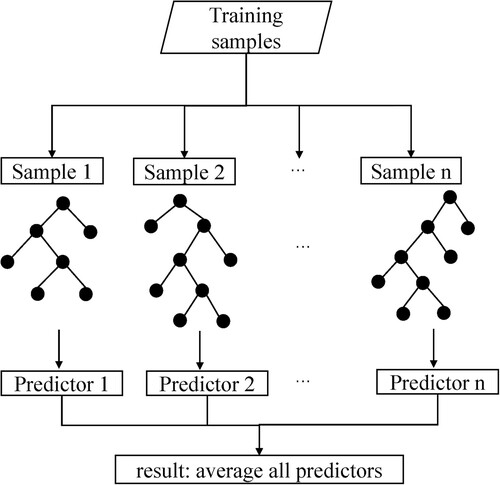Figures & data
Figure 1. Spatial distribution of the six mountainous sites: (a) All sites over the globe. (b) One site, GMN-PG3, in the Sierra Nevada in Spain, and (c) The other five sites (sites 2–4 and site 6–7) in the Chengde Experimental Area. The legend in (a) represents the classes of mountains as defined by the United Nations Environment Program World Conservation Monitoring Center (UNEP-WCMC), and the legends in (b) and (c) show the elevations obtained from the Shuttle Radar Topography Mission (SRTM).

Table 1. Detailed information of the six sites used in this study.
Figure 2. The different ways to deploy the measuring instrument on a sloped surface: (a) parallel to the horizontal surface, (b) parallel to the inclined surface, and (c) diagram of the corresponding θi and solar zenith angle θ0.

Figure 3. Diagram of calculation of factors of the terrain of the target pixel Z5. Z represents the elevation of the pixel.
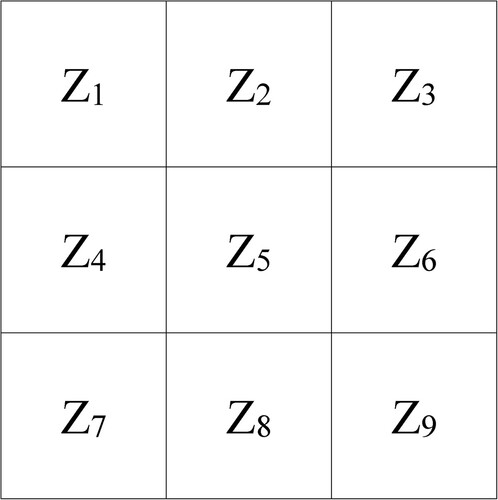
Table 2. Classes of Mountains defined in UNEP-WCMC.
Figure 7. Spatial distributions of (a) the 17 study regions within typical mountainous areas (see ) across the world, and the training and validation samples acquired from them (a1)–(a17). The legend in (a) represents the classes of mountains and that in (b) represents the land cover type as defined by the International Geosphere–Biosphere Program (IGBP) based on MCD12 C1 in 2015.
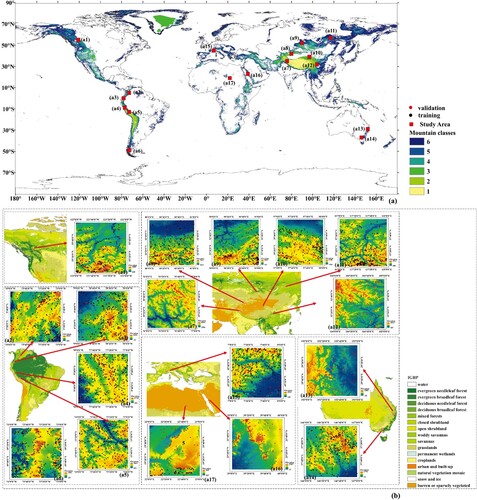
Figure 8. The statistics on all training (orange bar) and validation samples (yellow bar) of DSRdaily-rugged based on various factors: (a) A (0−360°) with an interval of 45°, (b) S (0−90°) with an interval of 10°, (c) φ (latitude) within 40° S−90° S, 20° S−40° S, 0°−20° S, 0°−20° N, 20°−40° N, and 40°−90° N, (d) Vd (0.5∼1) with an interval of 0.1, (e) doy (1∼365) with an interval of 60, and (f) elevation as determined by the six mountain classes defined in .
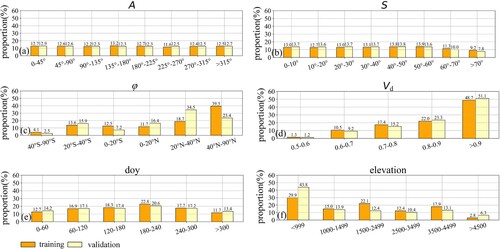
Figure 9. Scatter plots between DSRins-rugged and DSRdaily-rugged at (a) 8:30, (b) 9:30, (c) 10:30, (d) 11:30, (e) 12:30, (f) 13:30, (g) 14:30, (h) 15:30, (i) 16:30, and (j)17:30hrs, local time.

Figure 10. The correlation between DSRins-rugged and DSRdaily-rugged as represented by R2 under different combinations of S and A at five times: (a) 10:30, (b) 11:30, (c) 12:30, (d) 13:30, and (e) 14:30hrs. (f) The corresponding sample size at the five times, and the different colors indicate the numbers of different samples.
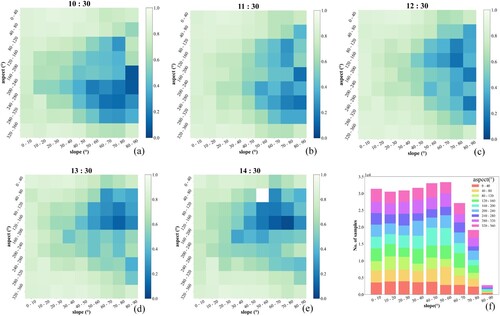
Figure 11. The relationship between DSRdaily−rugged and DSRdaily−flat as represented by the normalized RMSE, normalized MAE obtained by normalizing the original RMSE and the MAE through min-max normalization method for clearer presentation, and R2 with different slopes. The closer R2 to zero, and close the normalized RMSE and the MAE were to one, the worse was the correlation, and vice versa.
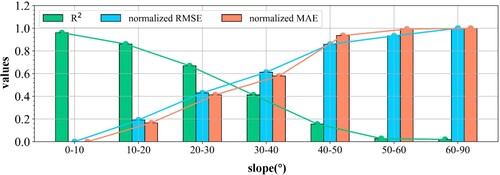
Table 3. The relationship between DSRins-rugged and DSRdaily-rugged as represented by the RMSE and R2 for different albedo values at an interval of 0.2 from 0−0.7 at five times (10:30, 11:30, 12:30, 13:30, and 14:30hrs).
Table 4. Hyper-parameter settings used to identify five optimal DSRMT models. The three values in brackets for each hyper-parameter of every model represent the start, interval, and end values, respectively, and the values in parentheses represent the value of the confirming hyper-parameter.
Figure 12. The overall accuracy of the , obtained by the weighted average of the outputs of the five DSRMT models based on all training samples.
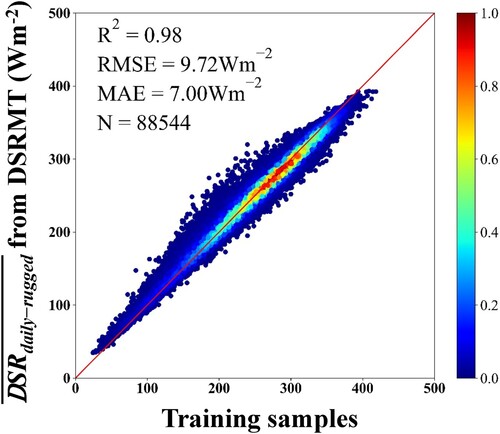
Table 5. The accuracy of validation of the five DSRMT models using validation samples from CERES4.
Figure 13. The accuracy of validation of based on the weighted average of five DSRdaily-rugged estimates of the five DSRMT models by using (a) all validation samples from CERES4, (b) validation samples from CERES4 for regions that provided the training samples, and (c) validation samples from CERES4 for regions from which training samples were not chosen.

Table 6. The accuracy of validation of calculated by using different combinations of the five DSRdaily−rugged estimates from the DSRMT models from 10:30–14:30hrs based on all validation samples from CERES4. The letters A, B, C, D, and E represents the DSRdaily−rugged estimates of mod1030, mod1130, mod1230, mod1330, and mod1430, respectively.
Table 7. Results of validation of the five DSRMT models in terms of estimating DSRdaily-rugged in comparison with in-situ measurements from six mountainous areas.
Figure 14. The overall accuracy of validation against in-situ measurements of (a) the optimal estimates according to us based on the weighted average of the outputs of the DSRMT models, and (b)
estimates obtained by averaging all estimates DSRins-rugged by using the DCF method during the day.
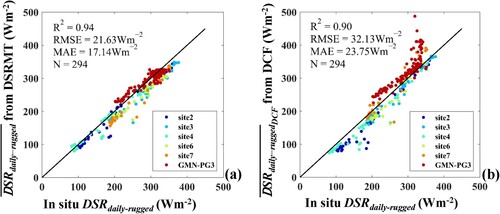
Figure 15. Temporal variations in the values of based on the DSRMT (red line),
based on the DCF method (green line), and in-situ measurements (black dot) at (a1) GMN-PG3, (b1) site 2, and (c1) site 4. (a2–a3), (b2–b3), and (c2–c3) show their corresponding scatter plots against the in-situ measurements. Note that the time given on the abscissa is not continuous in (a1)–(c1).

Table 8. The validation results of the sinusoidal method by using data on DSRins-rugged from CERES4 at each of the five times as the input against the same in-situ measurements.
Figure 17. Accuracy of estimates obtained by the DSRMT against in-situ measurements by using DSR-related variables from (a) MCD18 and (b) CERES4 as inputs.
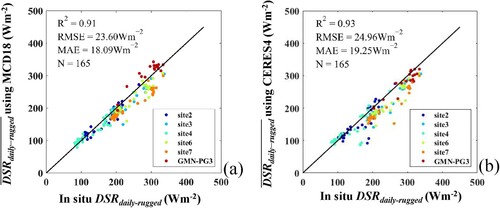
Table 9. The accuracy of validation of estimates of generated by the five DSRMT models under various values of S, A, and elevation.

